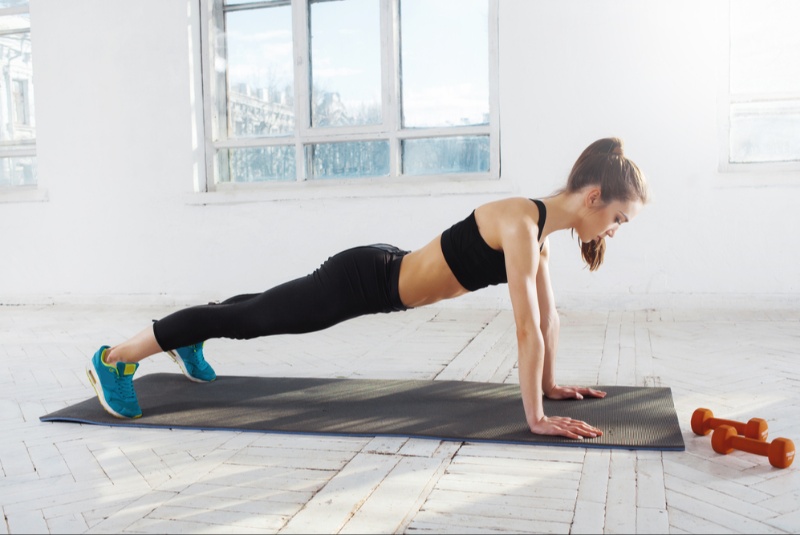Most people don’t have time to spend hours at the gym every day, but that doesn’t mean you can’t stay active. In fact, small and consistent changes to your daily routine can make a big difference to your health. Whether your goal is to improve fitness, boost your energy levels, or just move more throughout the day, there are plenty of ways to do it without carving out big chunks of time.
Below are simple, realistic strategies you can use to add more physical activity to your life—no gym membership or fancy equipment required.
Walk Whenever You Can
Walking is one of the easiest and most effective ways to fit in extra activity. It’s low-impact, doesn’t require any gear, and can be done anywhere. Try parking farther from the store entrance, taking a walk during your lunch break, or walking to nearby places instead of driving.
Even short walks add up. Ten minutes here and fifteen minutes there can result in over an hour of extra movement by the end of the day.
Take the Stairs
Skip the elevator and use the stairs whenever possible. Stair climbing is a great cardiovascular workout that also strengthens your legs and glutes. If you live or work in a building with multiple floors, this is an easy way to increase your daily physical activity without going out of your way.
You can even challenge yourself by climbing two steps at a time or increasing your pace to get your heart rate up. It may feel tough at first, but over time you’ll build stamina.

Add Movement to Your Routine Tasks
Daily chores can double as exercise if you do them with intention. Activities like vacuuming, scrubbing floors, mowing the lawn, or even carrying laundry up the stairs all require physical effort. Instead of rushing through them, try turning these tasks into mini-workouts. Put on music, move a little faster, and engage your core while you work.
Turning routine responsibilities into fitness opportunities helps you stay active without changing your schedule.
Make Breaks More Active
Rather than checking your phone or grabbing another coffee during your break, use that time for some quick movement. Stretching, taking a short walk, or doing a few bodyweight exercises like squats, lunges, or push-ups can refresh both your body and your mind.
Even two or three short activity breaks throughout the day can improve circulation and help prevent the stiffness and fatigue that often come from sitting too long.
Incorporate Desk Exercises
If you work at a desk, you probably sit for long periods, which can take a toll on your health over time. Fortunately, there are exercises you can do right from your desk chair—like seated leg lifts, calf raises, or shoulder rolls. You can also stand up regularly to stretch, do wall push-ups, or march in place while on calls.
Set reminders to move every 30–60 minutes. These micro-movements might seem minor, but they help counteract the effects of a sedentary lifestyle.
Use Technology to Stay on Track
A fitness tracker or pedometer can be a great motivator. Seeing your step count or activity levels throughout the day gives you real-time feedback and encourages you to reach your goals. Many smartphones also have built-in health apps to track movement, steps, and even reminders to stand up.
Set realistic daily goals, like 7,000 to 10,000 steps, and work toward gradually increasing them as you get more comfortable.
Turn Screen Time Into Move Time
Watching TV or browsing your phone doesn’t have to be completely sedentary. During commercial breaks or between episodes, get up and stretch, do some jumping jacks, or jog in place. If you’re watching a show on a laptop or tablet, stand up and do some light stretching while you watch.
Making this a habit transforms passive time into something more beneficial without giving up your favorite shows.
Walk While You Talk
Phone calls and Zoom meetings can be perfect opportunities to get in some extra movement. If you’re not required to be on camera, take your calls while walking around your home, pacing your office, or strolling through a nearby park.
It’s an effortless way to build activity into time you’re already spending on communication—and you may even find that walking helps you think more clearly during conversations.
Make Social Activities Active
Social time doesn’t always have to revolve around food or drinks. Next time you meet a friend, consider suggesting a walk, a hike, or an activity like bowling or dancing. If you have kids, turn family time into something physical like a bike ride, kicking a soccer ball around the yard, or playing tag at the park.
Being active together is a great way to bond while also working toward your fitness goals.
Dance Around the House
Dancing is one of the most enjoyable and freeing forms of exercise. You don’t need to be good at it—you just need to move. Put on your favorite playlist and dance while cooking dinner, doing chores, or even as a morning pick-me-up. It’s a fun way to get your heart rate up, boost your mood, and burn some extra calories.
Even just ten minutes of dancing can lift your energy and count toward your daily activity goal.
Stretch First Thing in the Morning and Before Bed
Starting and ending your day with some light stretching or yoga not only helps with flexibility and joint health but also mentally prepares you for the day ahead. A short routine can wake you up in the morning and help you relax at night, improving both your physical and mental well-being.
You don’t need to commit to a full yoga session—even five minutes can make a noticeable difference.




